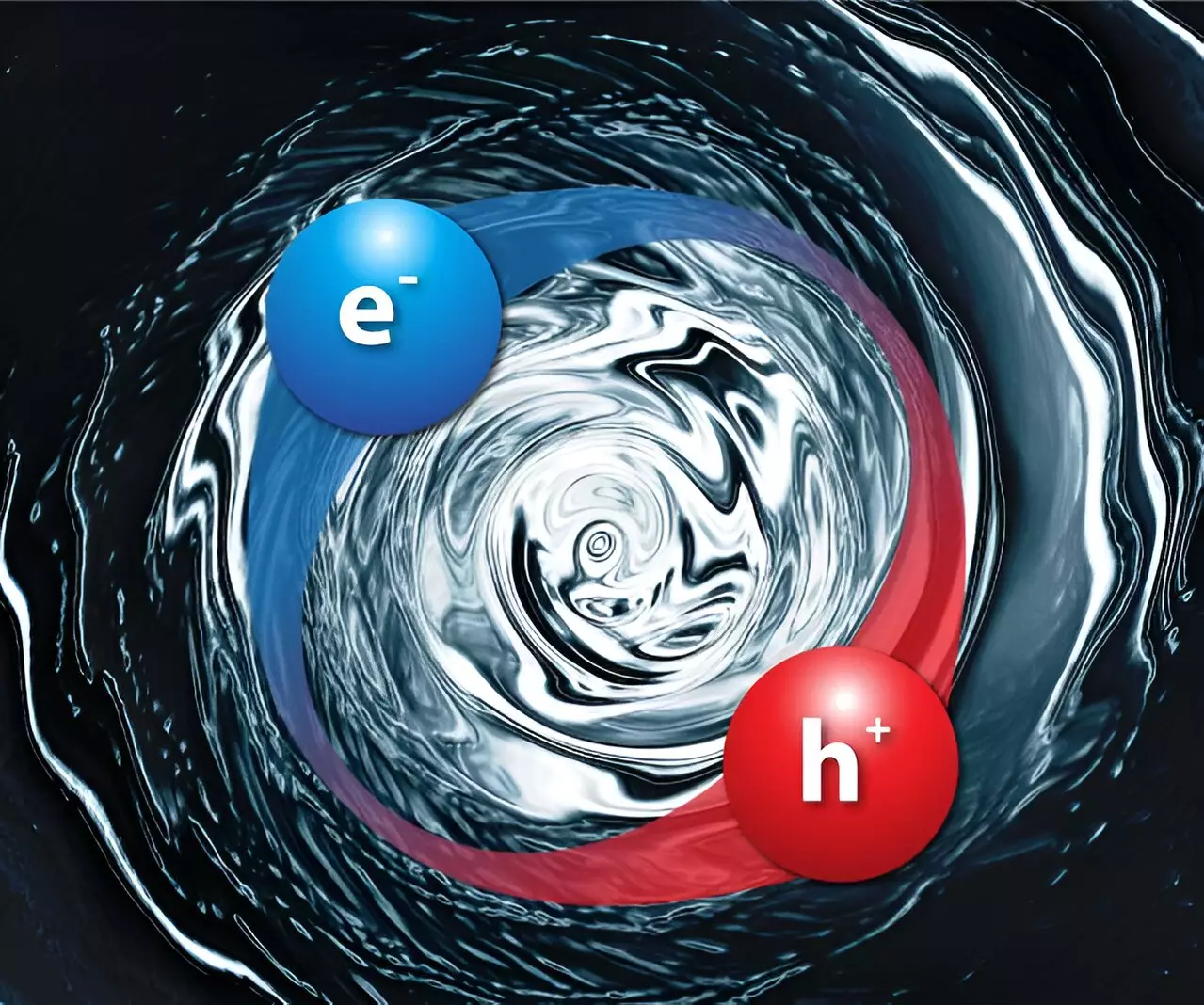Excitons represent a pivotal facet of condensed matter physics, combining the dynamics of charged particles with peculiar quantum properties. When an electron becomes excited to a higher energy state, it leaves behind a positively charged “hole,” creating an exciton as these oppositely charged entities bind together. Historically, excitons have been observed primarily in insulators and semiconductors, materials that serve as the backbone of modern electronic devices, enabling the operations we often take for granted in computers and smartphones. The recent groundbreaking research conducted by Bruno Uchoa and Hong-yi Xie promises to enhance our understanding of excitons by introducing a new class that could revolutionize quantum devices.
Uchoa and Xie’s publication in the Proceedings of the National Academy of Sciences spotlights a novel type of exciton, termed a “topological exciton.” This intriguing concept emerges from the study of Chern insulators, a unique group of materials characterized by their distinct electronic properties. Unlike conventional insulators, Chern insulators enable electrons to flow along the edges while isolating them in the interior, creating a fascinating dichotomy that supports the existence of unique exciton forms with finite vorticity.
Topology—the mathematical discipline investigating the properties of space that remain invariant under continuous transformations—underpins this research. In simple terms, topological properties are akin to recognizing that a doughnut and a coffee mug belong to the same class, as both can be continuously reshaped into one another without cutting or gluing. This analogy emphasizes the significance of studying materials that exhibit robust electronic characteristics immune to typical imperfections, grounding the study in mathematically sound principles.
The concept of “churn” in topology brings added depth to the discussion of excitons within Chern insulators. Churn quantifies the essential characteristics of these materials by representing them through whole numbers, which helps in understanding how they can sustain unidirectional currents—a phenomenon that aligns perfectly with the continuous and stable behavior essential to quantum devices.
Uchoa eloquently explains that while electrons may travel effortlessly along the edges of Chern insulators, the insides remain electrically inert, signifying a unique operational profile. By imparting light on such materials, Uchoa and Xie elucidate how excitons generated inherit the nontrivial topological properties of the oscillating electrons and holes, giving rise to a remarkable interplay between light and matter.
The emergent topological excitons offer a tantalizing glimpse into the future of quantum technologies. Once generated, these excitons are theorized to spontaneously emit circularly polarized light. This characteristic holds significant promise for the realm of optical devices. Xie notes that under low-temperature conditions, excitons could consolidate into a novel type of neutral superfluid, possibly catalyzing the development of advanced photonic devices tailored for quantum computing innovations.
Not only could such excitons pave the way for sophisticated polarized light emitters, but they could also serve as pivotal components in quantum communication systems. The potential to manipulate qubits—quantum bits that can exist in entangled states of ‘on’ and ‘off’—via the vorticity or polarization of emitted light positions topological excitons as significant players in the burgeoning landscape of quantum information science.
The research spearheaded by Uchoa and Xie marks a compelling advancement in the field of condensed matter physics, particularly pertaining to the understanding and application of excitons. With their prediction of topological excitons, the foundation is laid for future studies that could unveil techniques for designing next-generation optical and quantum devices. As we stand on the brink of this quantum frontier, the implications of this research may redefine the architecture of modern technology, allowing for unprecedented computational capabilities powered by the rich interplay of quantum mechanics and topology. In an era increasingly characterized by digital transformation, the importance of such innovative studies cannot be overstated.

